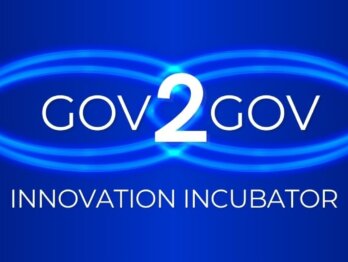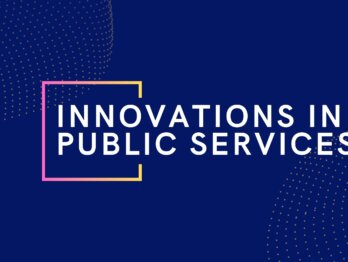Early to rise, early to fall – the destiny of vanguard projects in the public sector?

In my 20 years of being a public servant I have been fortunate enough to have seen or read about quite a few innovative projects (Have we told you we have a database of case studies? Why not submit your own? We have also opened a Call for Innovations on Cross-Border Collaboration). These have taken all sorts of forms and have involved varying degrees of novelty, though all shared a desire to make a difference. One thing I am starting to suspect, however, is a common tendency (and perhaps fate) for projects that I would describe as being forerunners or those that are at the vanguard – the ones that truly break new ground. In this blog post I would like to test some observations and consider why it might be that those projects that are at the forefront can struggle to find sustainability or longer-term permanence in the public sector, and consider why that might be a problem at an innovation system level.
Public sector forerunners and vanguards
Have you ever come across a project or initiative that sort of gives you a jolt because it’s just so different or new and it opens your eyes to a new way of thinking or seeing what is possible? I can still remember when I first heard about the ‘Rules as Code’ approach that underpinned the ‘Better Rules, Better Outcomes’ work in New Zealand and I felt buzzed from it, because I had never thought about digital transformation in quite that way (and so it was no surprise to me when it was later featured in our Global Trends work). Or the time a colleague introduced me to the work being done by MindLab, which at the time (2009) opened my eyes to the possibility and potential of innovation labs. These are the sorts of projects I mean when I refer to the forerunners and vanguards – the ones that just don’t fit with what you’ve known previously or that connect pieces in new, potentially revelatory ways.
I can think of a number of forerunner efforts that have attracted varying degrees of acclaim. Some of those that I have found particularly inspiring would include:
- MindLab – one of the first public sector innovation labs and one that not only introduced a structured approach to innovation for the public sector but made significant strides in building awareness of the need for a structured approach to public sector innovation
- Helsinki Design Lab – which did some amazing groundwork in demonstrating what strategic design could mean and involve for the public sector (if you haven’t read Dark Matter and Trojan Horses then you’re missing out)
- Alberta CoLab – which, in my opinion, did some great thinking and maturation of process by melding different methodologies and did some important demonstration work re building public sector capability in new methods
- Service Innovation Lab – which brought together digital and service design in order to combine a connected government perspective with a citizen-first perspective.
You might notice a pattern here, which is that these examples are all labs; e.g. they were created as organisational structures. However, I use these examples in part because labs are easier to point to as a discrete initiative, with a tangible start (and finish in these instances). There are many other initiatives that I can think of but which are more informal or more difficult to publicly talk about. In this piece, I am drawing from a diverse range of projects that I have seen bravely introduce a new method, a new way of working or of working with others, new thinking or new worldviews and assumptions that challenge the existing way of seeing the world.
What I have observed across these different examples is that many of them, I suggest, have struggled to ‘stick’; i.e. they may survive and even thrive for a while, sometimes for several years, but it feels like they fall short of true integration into the status quo and then they are edged out, wrapped up or rewritten. They don’t seem to have the sustainability that initiatives that deviate a bit less from the norm can often seem to achieve.
Yet often these vanguard projects truly pave the way for others, either elsewhere in the same jurisdiction or further afield in other countries. From a wider system perspective, these vanguards can scout the way for others, providing valuable intelligence and lessons. They can provide powerful illustrations and demonstrations of something new that can inspire and inform others. Even when they are not documented and communicated as thoroughly as the labs I mention above, the very existence of an example as a precedent, as a realisation of an idea can be enough to spark adoption or adaptation elsewhere, as others see a solution or an opportunity relevant to their own context. These forerunners can help show the way, even if the details of how, exactly, they got there are not well known or shared.
Why, then, might it be that such initiatives, even when they offer a lot of potential, struggle to gain footing and acceptance and become embedded? And does this matter or should we just accept this as part of the natural order of things, with the knowledge that while the forerunners might burn bright (and then burn out), they can inspire longer-lasting changes and shifts elsewhere?
Storytime: DesignGov, an 18 month experiment
At this point I’d like to note my own experience with something that I regard as another forerunner project. Once upon a time in a land far away (Australia), I was part of an experimental initiative called DesignGov, a whole-of-government innovation lab that applied design thinking and other newer methods to address a whole-of-government problem (how to dramatically improve business to government interactions). Being a new structure, with new methods, differences in how we were funded and with a different mandate, there was a lot of experimentation, a lot of learning, and sometimes some heated conversations (and maybe even a few tears). It was an intense 18 months of trying something very different, and while there was a lot learnt and tried during those months, at the end of the pilot, and with changes in the operating context, the experiment was concluded. While DesignGov was certainly not the first lab in the Australian Public Service, it was however followed by many others in the years after. It acted as a vanguard in scouting the way for more seriously embedding innovation as a capability.
DesignGov also helped make me first reflect of the challenges of such projects and provided a starting point for some observations and hypotheses drawn from a wider range of examples.
The costs of going first
The following are some of the things I have observed about the challenges of scouting new territory, even though it makes it easier for those who might follow or learn from the experience.
First mover disadvantage – learning curves and activating antibodies
Doing something new often involves a steep learning curve, for both those doing it and for those they are trying to explain or communicate it too. If you introduce a new methodology, not only do you need to build your capability and mastery of it but also help decision makers and others understand its value and how it can best be used. This combination of learning and delivering at the same time can be challenging, as we all know how hard it is to be proficient at something we’re still learning.
Then on top of that, there is often also the need to navigate administrative processes and policies to accommodate the new working methods or to reflect the new assumptions and beliefs. This is generally not a frictionless process, as it requires others to change their processes and their work, and often those other areas (e.g. HR, finance, procurement, IT, risk management, audit, etc.) may not understand why these changes or exceptions are being sought (and thus may be resistant or just irritated at the additional hassle or exception to already agreed processes).
Both of these elements mean that it can be easy to have something new that does not yet work as smoothly as other parts of the organisation or eco-system and where the costs and failings are very visible and the potential payoff less apparent. For the public sector, the first bit of the innovation s-curve is the one where most of the attention (e.g. in terms of scrutiny, risk-avoidance or over-governance) is often given.
In such a situation it is easy for the ‘antibodies’ (the natural workings of the system that pay attention to, and often attack, variance) to be activated in the system. They can act to either introduce new, or maintain or increase existing, restraints that are seemingly necessary but which end up helping to suffocate the innovative endeavour. Even when the vanguard project manages to navigate the steep learning curve, building and/or sourcing capability, and can mitigate or neutralise the antibodies, this generally takes considerable effort, taking time, energy and resources that might otherwise have gone to help the project achieve more and perhaps integrate further. The inspiration and learning provided by the example however may travel elsewhere, providing a higher initial starting baseline of performance and communication, meaning that there might be less activation of resistance and/or a higher performance meaning that it is easier to prove the value of the approach.
In short, while not necessarily fatal, this potential first mover disadvantage suggests there are costs to going first which might waylay even the most promising of projects.
The inevitable patience of the naysayers – risk, defaults and exceptions
Another element at play is that it is very easy to criticise when something new is tried, and the public sector, for various reasons, is highly attuned to the risks of doing something new. In addition to the natural antibodies that can be activated when something different occurs and upsets the established processes and protocols, this focus on risk provides multiple opportunities for well-intentioned and badly-intentioned critiques and scepticism, for doubt and for questioning.
Making the case for change may often be the easiest thing to do in these situations. You build the business case setting out what is not working now or what the opportunity is, you provide a detailed proposal and make the case for resources, working out technology and skills needs. You navigate the process, whether it’s a pitch to senior leadership and/or a budget proposal and you build support for what you’re attempting. Other people or areas of the organisation/system may not have opportunity to really interject at this point or may not be bothered about it initially, as they often may not yet see or realise the implications of what you’re doing, and thus not see it as related to or impinging on their work or responsibilities.
In such a situation, you may get leadership support and approval of the plan, only then to find in implementation that there are suddenly a range of issues and concerns that were not previously raised, as others add their perspectives once the project or initiative is tangible and ‘real’. Whereas the ‘yes’ to go ahead might only come once, the questions, the doubts, and sometimes the attempts to undermine or derail the project when others see it as impinging upon or risking their own work or ways of work – these might be recurrent.
This resistance, reluctance or plain resentment can of course be negotiated and overcome, and many do manage to do so. However, for something very new it can take a lot of effort and work to understand the where and why of the resistance, to unpack what is underneath any naysaying, and to provide adequate rebuffs or responses to mitigate or dispense with the concerns. For a new project attempting to get things done this can be a big hurdle, especially as the leadership or political support given to them is often tied to expectations of demonstrating value quite quickly.
Again, this provides a situation where the vanguard can make it easier for any that follow, in providing an example or even instruction about how to navigate the particular hurdles, so that successor projects can instead focus more on the elements that matter than having to spend as much time jumping over hurdles. Any negative fate for the vanguard project, however, is as likely to be seen as a justification for those that doubted it from the beginning, giving their scepticism legitimacy.
Enthusiasm cliff – exhausted capital and psychic strength
In the face of a steep learning curve, antibodies that require additional work to overcome process hurdles, and questioning and pushback by naysayers, constantly making the case for change can be tiring and sometimes draining.
Of course it can be uplifting to work through initial approvals and making the business case the first time, and there can be satisfaction from learning and making something different work. Often external stakeholders will see the need and the merits of an idea more clearly than those enmeshed deeply in the context, and might provide an important source of validation and support. However, in situations where the novelty needs to be constantly defended, such rewards and recognition may not be enough for someone to keep on making the case, to defend and to explain, to justify why this project or initiative should be given support when others may view it with disinterest or even take a stance of active resistance. And even when the project demonstrates success, providing a working prototype, new insights or demonstrating the value and contribution of a different approach, this can be quickly habituated to by those sceptical (“But what comes next? How can this be done faster and/or cheaper?”). This can mean that the progenitors of the project may not even get satisfaction when the project performs well, instead being forced to consider the next steps and being rushed along for more and more.
Spearheading change can thus require people to either invest their personal and professional capital (e.g. the faith and trust that others have in them) and their own enthusiasm and psychic effort in trying to persuade others or to prove success.
The vanguard thus again bears the costs, while any successor efforts elsewhere may have an easier time as they may not have to so vigorously defend or invest personally and professionally in something that is better understood and easier to ‘sell’ as a proposal – even if it is just because they can point to an example or a frame of reference for others, something that makes the concept less novel and thus less abstract or remote to others. And once the first use case is demonstrated, others less closely involved may find it less difficult to accept the idea as it is no longer so alien or unprecedented.
Leading edge not bleeding edge – the tricky distinction of knowing where the line is
I once heard a senior leader talk about wanting to be at the leading edge not the bleeding edge, yet it can be hard to distinguish between these two states. When you are working with something very different to what is the norm in your context, the lines between them can be blurred. It is very easy when working on something unfamiliar to your context to discover unforeseen dependencies and connections, meaning that a project that might have been thought of and communicated as only being about X and Y, suddenly involves Z, where Z requires engaging with different stakeholders, different processes, different policy and political considerations, and maybe different skills and capabilities. This sort of situation can make project sponsors uncomfortable, as something they thought was only about, say, AI, suddenly starts involving ethics, sensitive stakeholder groups and potential clashes with the IT department. Senior leaders rarely like surprises, and the bleeding edge inherently involves the unexpected.
This is something that is much easier for any successor project to avoid, as they can benefit from the learning and frame the project differently from the outset, giving greater comfort to decision makers about where the line or border around this initiative is.
Exceptional projects, exceptional circumstances – sustaining beyond the starting conditions
The right conjunction of circumstances and people for such vanguard efforts do not come along every day. Many such projects that I know of involved fairly unusual or even exceptional circumstances, where 9 times out of 10 you would have said it would never have happened. The reason that they do occur is often because of a particular set of circumstances, a mix of people and conditions, and the ability to take advantage of external events or shifts in agendas and priorities.
Often the easiest thing to point to is the people involved – that there is a leader or a mix of people in the team that either had the faith of a set of sponsors or senior leaders. However it might also be taking advantage of or building momentum, the push of a senior leader, the prompting or demands of the political level, a funding opportunity or something else.
Whatever the particulars, this alignment of circumstances and resources may not last very long. One of the main people involved leaves, perhaps weakening the faith others have in the project or initiative. A senior leader might change positions or move on, leaving the initiative even more vulnerable to antibodies and naysayers. There might be a political shift or a funding envelope is reached or one of many other situations happen, disrupting the fragile position of the vanguard effort. These forerunner projects are more vulnerable to such developments for the very fact that they are by definition exceptional in some way.
In this way, such exceptions can provide a sort of ‘research and development’ function that then benefits others elsewhere who might never have been able to marshal the resources or opportunity but that can take advantage of the lessons and insights and put them into effect.
Ahead of the curve – the challenge of riding a wave that you also started
In addition, sometimes such forerunner projects can fail because they are ‘ahead of the curve’ or where ‘the conditions just aren’t right yet’. This is a particular risk for the vanguard, because they may in fact help create the right conditions, and so by definition are ahead of the curve they are creating. Their experimentation and the learning that comes with it can lay the groundwork for greater progress and success, by providing lessons, insights and illustrations that can be drawn upon by colleagues or by counterparts in other jurisdictions. In turn this can engender further adoption and support for an approach, until it is seen as the obvious and natural course of action. In retrospect such projects will often be seen as having occurred at the wrong time – though without asking whether the ‘right’ time would ever have happened without this effort taking place.
A natural condition?
If there is an inherent set of factors that mean the vanguard will often (nearly always?) fail to embed, no matter what temporary success or acclaim they might achieve, does this matter? Or is it equivalent to start-ups where many will fail, with founders and others involved often going on to set-up more successful initiatives with all they’ve learnt?
I think there are some things that are particular to the public sector context that mean that the disadvantages of going first come with some peril when seen from a wider system perspective and thinking about how to sustain the innovation we want and need in the public sector. While the system might benefit overall from the learning that takes place from the vanguard (such as the tacit knowledge generated and share with colleagues, the example that is built upon by others, or just the precedent that is made and used as a reference point or a tangible example that can be used to say ‘well we know it IS possible’), the costs mentioned can often fall on those who have been brave (and/or sometimes naïve or foolhardy) enough to try something different. While there will be some who are seen as having demonstrated success as part of the vanguard, these cases often just serve to emphasise the exceptional nature of being at the front rather than as something normal.
Such a situation is unlikely to engender a wider spirit of experimentation – or at least it will suggest that experimentation should be as safe as possible, thus defeating some of the purpose of experimentation. If learning by forerunner projects is valuable, but the benefits come most to those who come after, what incentive is there for any organisation or person to want to be at the bleeding edge in the public sector?
While this is somewhat speculative and testing of thinking, I do think there are some observations that can be made from this discussion.
- First, the value of projects that break new ground is only increased if the lessons are shared with others. That’s partly why our case study library is such an important resource, as it helps to document and share those lessons. Even better is when those involved can blog, share weeknotes, tweet, present or otherwise help codify some of the experiences involved in doing these projects. While it might be small comfort if and when a project comes to an end, the value provided to others can be significant, and help ensure
- Second, if this tendency is an accurate reflection, then it reinforces the importance of portfolio thinking and ensuring that individual innovative projects and initiatives are seen as part of, and help inform, a greater mix of projects, so that the failure or loss of any one still adds value to the collective effort.
- Third, if this is a fair set of reflections, then there is a tension for ambitious projects that want to break new ground. Being a scout or a vanguard may be hard to reconcile with a sustained and embedded approach, short of a significant and sustained commitment and investment from leadership, something that can be hard to secure.
Testing these observations
Is this story something that others recognise? Are truly innovative efforts destined to be forerunners, burning bright and fast only to leave the foundations (and mixed metaphors) for others? Or am I guilty of the opposite of survivorship bias (where you concentrate on those examples that succeed and overlook those that didn’t because they were not as visible) and only seeing those that ended prematurely without noticing those that have embedded themselves?
Let us know, either in the comments below, on Twitter, or by email, if you have any examples that you don’t think fit this mold or any thoughts you have about whether any of this is off track, it would be much appreciated!












